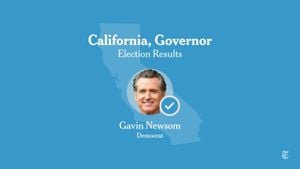The National Labor Relations Board (NLRB) made headlines recently with its landmark ruling declaring mandatory "captive audience" meetings illegal, particularly spotlighting Amazon's practices. This decision marks a significant shift in how companies can engage with their employees during union campaigns.
For years, many businesses employed the tactic of holding mandatory meetings to discuss the drawbacks of unionization, often under duress, requiring workers to attend or face disciplinary actions. The NLRB's ruling aims to curb this practice, emphasizing the importance of allowing workers to freely choose whether or not to participate in discussions about union representation without coercion.
This ruling stemmed from complaints against Amazon’s measures during its union election at the JFK8 warehouse on Staten Island, which became the first Amazon location to successfully unionize. According to the NLRB, Amazon held numerous meetings, leveraging its power to discourage workers from supporting the union through threats and misinformation. Amazon managers reportedly solicited grievances during these meetings and made implied promises to address them only if employees chose not to unionize, which the NLRB identified as unlawful.
The board, led by its Democratic majority, ruled 3-1 against the practice of these mandatory meetings, crossing out the precedent set by Babcock & Wilcox Co. back in 1948, which permitted such gatherings. The majority viewed the prohibition as necessary to protect workers' rights, asserting, “Ensuring workers can make a truly free choice about union representation is one of the fundamental goals of the National Labor Relations Act.”
Chair Lauren McFerran joined other board members to highlight how captive audience meetings give employers significant leverage, allowing them to project their anti-union rhetoric without room for opposing viewpoints. "Captive audience meetings undermine this important goal," McFerran stated. The ban intends to strike at the heart of what many have criticized as unfair labor practices, which could halt employers like Amazon from exerting undue influence over workers' decisions.
While unions celebrated the decision as a step toward greater worker rights, challenges loom on the horizon. Critics, including employers, argue the ruling infringes upon their First Amendment rights to express views about unionization. Republican NLRB member Marvin Kaplan dissented vigorously, denouncing the ban as unconstitutional.
The ruling could have broader ramifications beyond Amazon as other major employers have used similar tactics amid rising union campaigns at companies like Starbucks and Trader Joe’s. The NLRB stressed, though, it is open for employers to discuss unionization voluntarily—provided they do not coerce attendance or intimidate employees during the process.

The imminent challenge for the NLRB's decisions hangs over the future political climate. Following the upcoming 2024 elections, with Donald Trump poised to potentially resume office, experts anticipate significant changes to the labor board's posture. Trump’s administration is expected to replace Democratic appointees, possibly restoring the power dynamics favoring employers.
Supporters of the ruling see it as overdue justice for workers who have felt the weight of corporate pressure. Kara Deniz from the Teamsters union stated, "This is a long overdue win for workers," urging businesses to reconsider how they allocate funds meant for undermining unions and redirect those resources back to employees.
The NLRB’s ban on mandatory anti-union meetings undoubtedly stands as both a protective measure and potential flashpoint for future litigation. Employers may challenge this decision, arguing it violates their rights to free speech and complicates their engagement processes with employees.
Amazon itself, having launched legal battles against the NLRB, indicated plans to appeal this latest ruling, framing it as contrary to the National Labor Relations Act. Company spokesperson Mary Kate Paradis defended the practice of such meetings, saying they are necessary for employees to grasp all facts before making significant decisions about unionization.
A broader movement against captive audience meetings has seen legislative changes at the state level, with New York, California, and, more recently, Alaska enacting bans on such practices. The ruling reflects growing scrutiny of corporate tactics to dissuade unionization, aligning with workers' increasing demands for rights and recognition within major corporations.
This ruling concludes yet another chapter in the challenging dialogue surrounding labor rights at large corporations, making it clearer than ever: the imperative for transparency and fairness in the workplace cannot be understated. With the labor movement gaining momentum, the future will be closely watched by both advocates and opponents as the fight for workers' rights continues to evolve.



